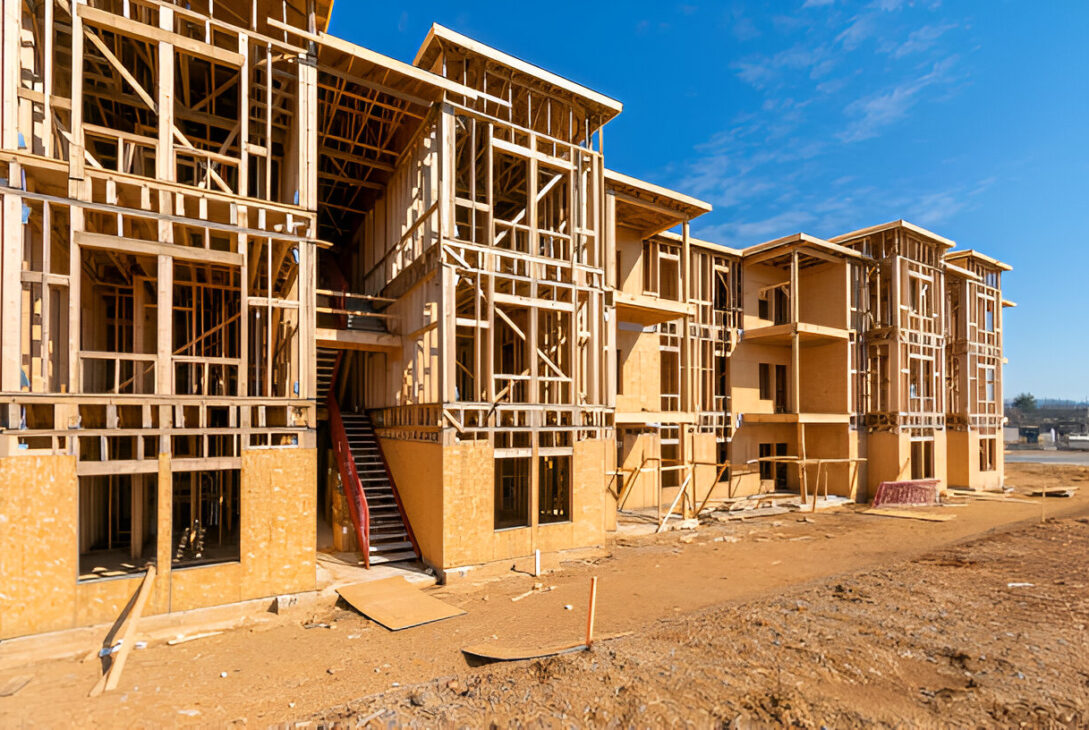Building a multi-story home is a complex and rewarding endeavor, with framing being one of the most critical aspects. The process of framing lays the house’s structural foundation, impacting its stability but also its aesthetic, and functional appeal. Given the complexity and requirements of multi-story homes, the framing process demands a meticulous approach and a clear understanding of various challenges and considerations that can make or break the project.
Essentials of Framing
Framing is the construction of the home’s skeleton, a network of beams, studs, joists, and trusses that form the house’s foundation and give it structural integrity. In multi-story homes, framing becomes even more crucial as it bears the load of multiple floors, each requiring precise measurements and alignment to maintain balance and strength. Beyond holding the home together, good framing enables smoother installation of walls, windows, and doors, enhancing the home’s overall durability and livability.
Unique Challenges of Framing
Load Distribution and Structural
One of the primary challenges in framing multi-story homes is ensuring appropriate load distribution. With each additional story, the load increases significantly, requiring a well-calculated system to support the weight effectively. Without careful planning, the structure can become susceptible to sagging, cracks, or even collapse. To counter this, contractors must integrate a robust framing design that evenly distributes weight across all supporting beams and load-bearing walls. For this reason, multi-story homes demand thorough structural analysis, often performed by structural engineers, to ensure the frame can withstand vertical and lateral forces.
Do you want to visit Haridwar? travel agents in Haridwar is the right place to plan your tour. You can book your tour from here.
Foundation and Soil Stability
Multi-story homes place a larger strain on the foundation, making it essential to account for soil type and stability before framing begins. Inadequate foundation work can lead to long-term structural problems, as weak soil or poorly compacted ground may not support the heavy load of a multi-story structure. Framing for these homes requires a stable, often reinforced foundation capable of handling the stresses of upper levels. This stability not only aids in supporting the frame but also ensures the long-term safety of the house against issues like settling or uneven floor levels.
Material Choices and Their Impact on Framing
Selecting the Right Lumber and Steel Components
The choice of materials in framing multi-story homes is critical. High-quality, kiln-dried lumber is often favored for its strength and durability, although engineered wood products are also popular for their resistance to warping and splitting. Steel framing, though less common in residential construction, is sometimes used in multi-story buildings for added support, especially in earthquake-prone areas where flexibility and strength are required. Deciding between wood and steel often depends on local building codes, budget, and specific project needs.
Moisture Control and Insulation
Given the heights involved in multi-story homes, framing must also consider moisture control and insulation to prevent long-term damage. Moisture can lead to wood rot and mold growth, compromising the frame’s integrity and durability. Using pressure-treated lumber, water-resistant barriers, and proper insulation techniques can greatly extend the life of the framing, especially in areas with heavy rainfall or humidity. Addressing moisture control early in the framing process ensures that the multi-story home remains safe and structurally sound over time.
Do you want to visit char dham? char dham tour operator is the right place to plan you Char Dham tour. You can book you tour from here.
Meeting Building Codes and Safety Regulations
Compliance with Local Building Codes
Each state or locality has its own set of building codes, which contractors must follow closely when framing multi-story homes. These codes cover everything from material standards to fire safety and load-bearing requirements. For instance, Los Angeles has strict guidelines for seismic safety due to the risk of earthquakes, influencing the framing techniques and materials used. General home contractors LA must stay updated on these regulations to ensure the building’s compliance and safety.
Incorporating Fire-Resistant Design
Multi-story homes require careful attention to fire safety, as fire-resistant materials and techniques can prevent catastrophic damage. Framing techniques now often include fire-rated materials and compartmentalization strategies that slow down the spread of fire between floors. This may involve using fire-resistant lumber treatments, installing additional insulation layers, or integrating specific fire-resistant building products. Prioritizing fire safety from the framing stage not only meets legal requirements but also enhances the long-term resilience of the home.
Framing Techniques
Platform Framing Versus Balloon Framing
Platform framing is the most commonly used method in modern multi-story homes, where each floor is built as a separate platform. This approach simplifies the framing process, as each level serves as a platform for the next, making it easier to ensure proper alignment and load distribution. Balloon framing, though largely outdated, is sometimes employed in specific architectural designs but requires continuous studs running the height of the building, posing additional fire safety concerns. Understanding the benefits and limitations of each technique is essential when framing multi-story homes.
Advanced Framing Techniques for Energy Efficiency
With an increasing emphasis on sustainability, contractors are adopting advanced framing techniques designed to reduce material waste and improve energy efficiency. Techniques like two-stud corner framing, insulated headers, and spacing studs 24 inches apart rather than the traditional 16 inches help conserve materials without compromising strength. These methods not only contribute to a reduced environmental footprint but also enhance the home’s insulation performance, leading to energy savings for the homeowner over time.
Selecting the Right Team for Framing
Importance of Experienced Contractors
Framing a multi-story home is complex and requires a team well-versed in multi-story residential projects. Choosing experienced contractors ensures that the project is executed with an understanding of load-bearing needs, advanced framing techniques, and efficient project management. Contractors should be equipped to adapt to the unique demands of each story, meeting both functional requirements and architectural vision.
In addition to structural framing expertise, a well-rounded contractor team understands the nuances of working with other professionals involved in the project. Architects, engineers, and specialty subcontractors all contribute to a well-framed home, so clear communication and coordination are essential to avoid delays or costly mistakes.
Do you want to visit Indiar? tour operator in India is the right place to plan your tour. You can book your tour from here.
Collaboration with Experts for Structural and Aesthetic Integrity
Building multi-story homes often involves consulting with engineers to verify structural calculations and incorporate reinforcements as necessary. Architects also play a role in the framing process, as they contribute to the home’s layout, dimensions, and design features that affect framing requirements. Together, these professionals ensure that the framing meets not only the safety standards but also the aesthetic and spatial goals of the project.
Moreover, in many cases, property owners may explore complementary wellness designs or practices for a balanced home environment, such as Reiki Healing Online services that help create a peaceful, healing ambiance. Integrating such holistic approaches can harmonize the physical and emotional aspects of a living space, adding an intangible, comforting dimension to the home.
Conclusion
Framing for multi-story homes presents a unique set of challenges and considerations, from selecting durable materials to adhering to stringent building codes. The load-bearing requirements, foundation stability, material choices, and safety standards all play a crucial role in determining the structural integrity of the home. Experienced contractors, particularly those familiar with local regulations and environmental considerations, are invaluable in navigating these complexities. By prioritizing high-quality framing, homeowners not only invest in a strong and durable home but also set the stage for a comfortable, safe, and visually appealing living space that can stand the test of time.



